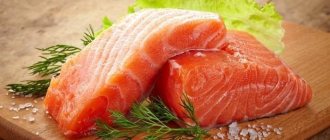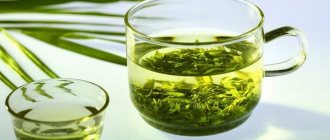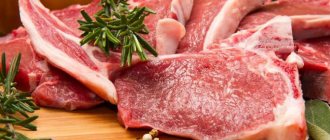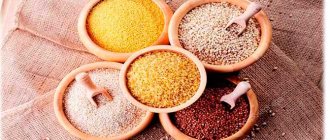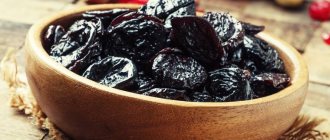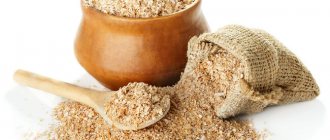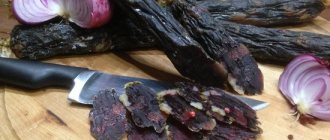There is a widespread belief that frozen vegetables are a harmful semi-finished product that has nothing healthy. However, research suggests otherwise. In fact, most frozen and fresh vegetables are similar in vitamin and mineral content.
A role is also played by the fact that during storage at room temperature, vegetables can lose nutrients, while freezing helps preserve them. How to properly cook frozen vegetables to maximize their benefits? Which mixtures are suitable for weight loss and which are harmful?
Calorie content of frozen "Mexican mixture"
Before moving on to the nutritional value of this product, let's consider its composition. In most cases, onions and green onions, carrots, bell peppers, tomatoes and green beans are used for semi-finished products. In some packages of the mixture you can find frozen champignons, broccoli and green peas.
What is included in the “Mexican Blend”:
- carrot;
- corn;
- green beans;
- green pea;
- celery;
- Red beans;
- pepper.
- proteins - 2.6 grams;
- fats - 0.2 grams;
- carbohydrates - 8.7 grams;
- calories - 60 kcal.
Thanks to such a variety of products, you can always please yourself and your loved ones with an unusual and tasty dish.
Calorie content of “Mexican mixture” per 100 grams:
Sometimes the final calorie content of the finished semi-finished product may differ depending on the manufacturer and its components. As you have seen for yourself, the calorie content of the “Mexican Mixture” is not that high. The products can be fried in vegetable oil, boiled or stewed with various cereals. Dishes that include a meat or fish side dish with vegetables are very popular. For a more spicy taste and aroma, we recommend using hot garlic or tomato sauce.
The benefits of frozen vegetables
The advantages of frozen vegetables are obvious - they last much longer, do not require pre-processing (they are already washed and chopped), and are also suitable for cooking using various methods. They can be stewed, baked, boiled and even heated in the microwave.
The only fundamental inconvenience is that frozen vegetables can only be thawed once. Repeated freezing destroys the texture of the product, turning it into ice. This is especially critical for frozen fruits and berries.
Content of vitamins and minerals
Research suggests that the blast freezing process preserves most of the vitamins and minerals contained in vegetables². In addition, green vegetables (primarily broccoli and green beans) are usually additionally processed with ascorbic acid to preserve color.
In turn, water-soluble vitamins (primarily B vitamins and vitamin C) that are lost during the blast freezing process are most often lost during heat treatment during cooking. When cooking vegetables in water, these vitamins are simply washed out and mixed with water.
Beneficial properties and harm
Now that you know about the composition and calorie content of the Mexican Blend, we can move on to studying its beneficial properties.
This product contains large quantities of vitamins C and B. They affect hormonal levels and strengthen the human immune system. But magnesium and calcium, which are also included in the mixture, help improve the condition of nails, teeth, bones and skin, restoring them to a healthy and well-groomed appearance.
Main beneficial properties:
Frozen vegetables can cause harm only if you are intolerant to a certain component.
Dietary properties of green beans:
How many calories are in green beans, what dietary properties they have, all this is of interest to those who lead a healthy lifestyle and monitor their health and figure. So we will try to answer these questions in the next article.
Beans are very popular due to their unique dietary properties and the content of a large number of useful vitamins and microelements.
Among the vitamins, it should be noted such as B vitamins, including folic acid and vitamins B1, B2, B5, B6, B9, as well as vitamins C, E and of course carotene. Beans are rich in useful micro and macroelements, such as iron, phosphorus, potassium, sodium, magnesium, calcium and others. Beans are high in fiber and protein. Fiber, by the way, is not rough, but rather gentle, just the kind that will help remove toxins from the human body, which makes it a desirable component of many diets, including diets for weight loss.
Beans, in the form of young pods, are recommended for people suffering from anemia or anemia. This product is also very useful for normalizing the function of the liver, kidneys, respiratory system, and even strengthening the nervous system. Green beans can and do lower blood sugar levels due to the presence of an insulin-like substance called arginine in this plant. If you regularly consume beans as a food product, then it is quite possible for diabetic patients to reduce their insulin doses.
Beans are very useful for normalizing the digestive system. It will not interfere with the normalization of the cardiovascular system, since iron, which is contained in large quantities in beans, can stimulate the formation of red blood cells. The calming properties of beans have also been noted. Those who often eat beans of all types have a balanced and calm character.
How to prepare the mixture?
The calorie content of the “Mexican mixture” ranges from 60 to 80 kcal, depending on the brand of the manufacturer and its components. During cooking, vegetables are subjected to heat treatment, which also affects the final calorie content.
The easiest way to prepare such a product is to fry vegetables in a frying pan. Or the ingredients can be boiled and mixed with cereals, for example, rice or buckwheat porridge. Vegetables are often complemented with meat or fish to create a complete dish.
good taste and low calorie content
I really love frozen mixed vegetables, because they are almost always delicious, they are very easy to prepare, and they are great as a side dish for meat, poultry, sausages and other foods.
I like the products of 4 Seasons, in particular the Spring vegetables are very good in composition, they contain everything that I love and I don’t even need to add anything to this mixture.
I have never prepared first courses with it, but I often use it for second courses, especially when I need to lose weight, and in winter, when there are few fresh vegetables.
There are different ways to prepare frozen vegetable mixture, I prefer to heat them in the microwave, that is, without fat, without frying, which is much healthier for the gastrointestinal tract.
The calorie content of this mixture is only 54 kcal, the net weight of one package is 400 grams, it’s enough for me twice.
Sometimes you can eat such vegetables even without meat, although I still like to combine them with meat products, it’s tasty, healthy and satisfying.
The price of such products has now increased, but they can often be purchased at various promotions.
In particular, the last time I managed to buy them at the Magnit store for only 38 rubles.
They are stored in the freezer and are very helpful when you don’t have time to cook dinner for a long time.
Composition of frozen vegetable mixture
Lecho:
- onion;
- tomato;
- zucchini;
- carrot;
- paprika or any sweet pepper.
Mexican:
- carrot;
- green beans;
- peas,
- corn;
- celery;
- red beans;
- pepper.
Hawaiian:
- corn;
- rice;
- green pea;
- pepper.
Güvech:
- okra;
- eggplant;
- Bell pepper;
- tomato;
- onion;
Ratatouille:
- tomato;
- zucchini;
- Bell pepper;
- onion;
- zucchini;
Paprikash:
- pepper;
- zucchini;
- green bean;
- tomato;
Frozen vegetable mixtures: benefits and harms
During freezing, all the beneficial substances found in vegetables and herbs are preserved. All mixtures contain all the vitamins and microelements necessary for humans. Both fresh and frozen vegetables contain vitamins B and C, potassium, calcium, and other useful substances.
All frozen vegetable mixtures help improve appetite, improve the functioning of the digestive system and normalize metabolism.
Frozen mixed vegetables are not harmful. They save you from vitamin deficiency and increase immunity. If you have an individual intolerance to one of the products, you should carefully study the composition of the mixture or make it yourself.
All mixtures are low-calorie. They are suitable for dietary and baby food.
How to cook properly?
The best method for cooking frozen vegetables is to steam them in a double boiler or in a special saucepan with a tray. After 5-7 minutes, the vegetables are ready to be used as an ingredient in dishes - for example, for frying or stewing with meat.
Frozen green peas or corn can simply be boiled in boiling water for 2-3 minutes - the presence of the peel will protect against the leaching of vitamins. In addition, many types of frozen vegetables can first be lightly fried in a pan and then lightly stewed.
Which brand of vegetables is better?
Before purchasing frozen foods, it is recommended that you examine the package in which they are packaged. The composition should list only “regular” ingredients (that is, the vegetables and fruits themselves), but not vegetable oils, starch, and other additives.
A bag of frozen vegetables should not resemble a block of ice. Otherwise, there is a high probability that it was re-frozen - in this case, the contents will be suitable only for making cream soup or casserole, since the texture of the vegetables will be destroyed.
***
New Fitseven materials, 5 times a week - in telegram:
- fit7seven
The content of vitamins and minerals in frozen vegetables is often identical to fresh ones. As for possible harm, freezing does not require the use of preservatives, polymers and antimicrobial substances to maintain freshness - unlike regular supermarket vegetables.
Scientific sources:
- Frozen food, source
- Frozen Vegetables Are Hot!, source
How to prepare frozen mixed vegetables
At home, you can independently invent and make various combinations of vegetables. You can put cabbage, carrots, beets, herbs and onions in the preparation for borscht. You can make a simpler mixture of beets, onions and carrots. If you wish, you can freeze all the vegetables separately and mix them together just before cooking.
Preparing frozen vegetable mixture:
- All vegetables should be carefully sorted, rotten and spoiled ones should be removed.
- Wash, peel, cut. Suitable for slicing vegetables: knife, grater, vegetable slicer.
- Blanching. Essential for preserving the color, flavor and texture of some vegetables.
- Place the vegetables in boiling water for a few seconds, drain in a colander, and dry.
- Transfer to a storage container: plastic container, freezer bags.
- It is advisable to use vegetables within 1 year.
Advice! Label the date the mixture was prepared on the outside of the bag or container. This way the vegetables will not sit for a long time.
Place the prepared vegetable mixtures in the freezer.
No comments or reviews. You can be the first!
© FindFood.ru - Culinary site, 2012-2019.
Use of information from the site is possible only with an active link to the source and a notification to the mailbox. It is allowed to copy information no more than 10 pages per month under the terms of the current site.
For any questions write to
-Categories
-Music
-Search by diary
-Subscription by e-mail
-Statistics
Vegetable mixtures: composition, recipes
If you don't have time to chop vegetables for a vegetable stew, or you need to whip up dinner, quick-frozen mixed vegetables will always come to the rescue.
They are inexpensive, can be stored in the freezer for up to a year and a half (Hortex), and their preparation takes no more than half an hour. Salvation for vegetarians, those who are brutally hungry when there is nothing ready, as well as housewives who have been bombarded by unexpected guests.
So, TOP 10 ready-made vegetable mixtures.
Initially, lecho is a Hungarian dish of stewed vegetables: paprika, tomatoes and onions. Vegetables are stewed until smooth, sometimes lard and wine are added. In East Germany, lecho is very popular as a side dish for fried meat. In Russia, the Hungarian dish has acquired a national flavor: carrots and ground pepper are often added to it: the vegetable mixture is no exception.
Compound:
- pepper
- tomatoes
- zucchini (optional)
- carrots (optional)
- onion
Nutritional value per 100 g of product:
- fat 0.1 g, protein 1.2 g, carbohydrates 5.3 g, vitamin C 89.5 mg, beta-carotene 1.2 mg
Energy value: 27 kcal.
Calorie content of vegetable mixtures
Monday, March 14, 2011 17:03 + to quote book
Vegetable mixtures: composition, recipes
If you don't have time to chop vegetables for a vegetable stew, or you need to whip up dinner, quick-frozen mixed vegetables will always come to the rescue.
They are inexpensive, can be stored in the freezer for up to a year and a half (Hortex), and their preparation takes no more than half an hour. Salvation for vegetarians, those who are brutally hungry when there is nothing ready, as well as housewives who have been bombarded by unexpected guests.
So, TOP 10 ready-made vegetable mixtures.
Initially, lecho is a Hungarian dish of stewed vegetables: paprika, tomatoes and onions. Vegetables are stewed until smooth, sometimes lard and wine are added. In East Germany, lecho is very popular as a side dish for fried meat. In Russia, the Hungarian dish has acquired a national flavor: carrots and ground pepper are often added to it: the vegetable mixture is no exception.
Compound:
- pepper
- tomatoes
- zucchini (optional)
- carrots (optional)
- onion
Nutritional value per 100 g of product:
- fat 0.1 g, protein 1.2 g, carbohydrates 5.3 g, vitamin C 89.5 mg, beta-carotene 1.2 mg
Energy value: 27 kcal.
Güvech
In Bulgaria, the word “guvech” simultaneously means both a clay pot with a lid and dishes of vegetables, meat and rice that are cooked in it. There are many varieties of gyuvech. It can be purely vegetable, or beef, pork or lamb can be used. gyuvecha is “filling” (or, in the Bulgarian manner, “building”) - adding beaten eggs at the end of cooking, sometimes in combination with milk (“kiselo mlyako”).
A distinctive feature of the vegetable mixture gyuvech, which is sold in our stores, can be considered the presence of okra - its green pods taste like a cross between eggplant and asparagus.
Compound:
- okra
- eggplant
- pepper
- tomatoes
- onion
Nutritional value per 100 g of product:
- fats 0.1 g, proteins 1.4 g, carbohydrates 5.2 g, vitamin C 65.6 mg, beta-carotene 0.8 mg,
Energy value: 51 kcal.
Product calorie analysis
Ratio of proteins, fats and carbohydrates:
- Vitamin A is responsible for normal development, reproductive function, skin and eye health, and maintaining immunity.
- Vitamin B5 is involved in protein, fat, carbohydrate metabolism, cholesterol metabolism, the synthesis of a number of hormones, hemoglobin, promotes the absorption of amino acids and sugars in the intestines, and supports the function of the adrenal cortex. A lack of pantothenic acid can lead to damage to the skin and mucous membranes.
- Vitamin C is involved in redox reactions, the functioning of the immune system, and promotes the absorption of iron. Deficiency leads to loose and bleeding gums, nosebleeds due to increased permeability and fragility of blood capillaries.
- Vitamin K regulates blood clotting. A lack of vitamin K leads to an increase in blood clotting time and a decreased level of prothrombin in the blood.
more hide
You can see a complete directory of the healthiest foods in the “My Healthy Diet” app.
How to prepare the dish “Frozen Stewed Vegetables”
- Heat vegetable oil in a frying pan.
- Place frozen vegetables in the pan.
- Add salt to taste and stir.
- Cover the pan with a lid and simmer the vegetables over low heat until cooked.
- Vegetable oil - 10 gr.
- Spring vegetable mixture - 250 gr.
- Salt (to taste) - 2 gr.
Nutritional value of the dish “Frozen Stewed Vegetables” (per 100 grams):
To come in
By logging into LiveJournal using a third-party service, you accept the terms of the LiveJournal User Agreement
- Devki_na_diete
- Recent Entries
- Archive
- Friends
- Profile
- Links
- 1. Index of topics
- 2. Classification of community members
- Communication with moderators
- 1. Post for requests and questions to moderators
- Post design
- 1. List of community tags (tags) with explanations and examples
- 2. Step-by-step instructions for placing tags (labels)
- Tags
- Anorexia and other disorders
- Anti-cellulite
- Dietary supplements and vitamins
- Baths and saunas
- Fasting (including according to Bragg)
- Sharing my experience
- Diagnostics Hemocode
- Diet 10x10
- Atkins diet
- Diet Buckwheat
- Ducan's diet
- Golden Needle Diet
- Diet Kremlevskaya (Luzhkovskaya)
- Maggi Diet (Egg)
- Mirimanova's diet (-60)
- Montignac diet
- Japanese diet
- Diet and PMS
- Diet and pregnancy
- Diet and breastfeeding
- Diet and smoking
- Diet and side effects
- Bonn Soup Diet
- Diet according to Protasov
- Diet according to blood type
- Diet of separate nutrition (Shelton)
- Diets during fasting
- Diets for vegetarians
- Other diets
- Diets for illnesses
- Diet diary and motivation
- Healthy food and calories
- Information and links
- How to get better
- Contacts and places
- Medicines and drugs
- Massage and the fight against fat
- Moderator's
- Don't eat!
- Discussions
- Volumes and centimeters
- Tell me the diet
- After losing weight
- Lose weight in X days
- Holidays and alcohol
- Gadgets for weight loss
- Foods and liquids
- I'm asking for advice
- Psychology
- Fasting days
- Sports and fitness
- Breakdowns and gluttony
- Carbohydrate rotation
- Horror
- Humor
- Page Summary
- blizok_lokotok — [+4]
- nadia_yacik — [+1]
- lutsiana – [+8]
- ninzy - [+3]
- koza_nostra — [+1]
- earth_blue — [+0]
- (Anonymously)
— [+0] - poxydolog — [+0]
- chaoticana - [+0]
Girls, here’s a question: I eat a lot of frozen vegetables from bags, but I just can’t figure out the calorie content. One package of frozen mixture contains 400 g and, say, 50 kcal per hundred grams. What is the weight of the finished mixture? Is it very different and how to count calories accordingly - multiply 400 by 50 for a whole package or already the weight of the finished dish by 50? I understand that the difference is not very big at 50 kcal per 100 g, but I want it to be like in a pharmacy. With these extra 100 kcal per day, I can still eat a testicle, it won’t hurt me at all to maintain the remaining vitality. Help the dunce, will you? I'm completely confused, Google is silent like a guerrilla, but I want it.
PS: moderators, don’t order me to execute you, if I messed up with the tags - tell me which one is superfluous, I’ll fix it, I promise!
ZZY: I have a hard time with arithmetic - multiplying not by 400, but by 4, naturally. But what worries me more is whether the weight of frozen vegetables and those already cooked is the same. Well, that is. Is there still 400 g on the plate or already, for example, 200?
multiplying 400 grams by 50 kcal is five. no, it's SIX,
Thank you, I thought it was just me who had problems with arithmetic!!
Hawaiian blend
Why this rice-vegetable mixture is called the paradise islands in the Pacific Ocean is not known for certain. However, despite its “secret” origin, this is one of the most popular semi-finished products, which is excellent both as a quick side dish and as a separate dish. And the absence of onions and carrots in the composition reconciles even picky people with it.
Compound:
- rice
- green pea
- corn grains
- pepper
Nutritional value per 100 g of product:
- fat 1.2 g, protein 3.7 g, carbohydrates 24.8 g, vitamin C 41.3 mg, beta-carotene 0.4 mg
Energy value: 125 kcal.
Calories Mixed vegetables, frozen, uncooked. Chemical composition and nutritional value.
Nutritional information and chemical composition of "Mixed vegetables, frozen, uncooked."
The table shows the nutritional content (calories, proteins, fats, carbohydrates, vitamins and minerals) per 100 grams of edible portion.
| Nutrient | Quantity | Norm** | % of the norm in 100 g | % of the norm in 100 kcal | 100% normal |
| Calorie content | 72 kcal | 1684 kcal | 4.3% | 6% | 2339 g |
| Squirrels | 3.33 g | 76 g | 4.4% | 6.1% | 2282 g |
| Fats | 0.52 g | 56 g | 0.9% | 1.3% | 10769 g |
| Carbohydrates | 9.47 g | 219 g | 4.3% | 6% | 2313 g |
| Alimentary fiber | 4 g | 20 g | 20% | 27.8% | 500 g |
| Water | 82.08 g | 2273 g | 3.6% | 5% | 2769 g |
| Ash | 0.6 g | ~ | |||
| Vitamins | |||||
| Vitamin A, RE | 254 mcg | 900 mcg | 28.2% | 39.2% | 354 g |
| Vitamin B1, thiamine | 0.122 mg | 1.5 mg | 8.1% | 11.3% | 1230 g |
| Vitamin B2, riboflavin | 0.085 mg | 1.8 mg | 4.7% | 6.5% | 2118 g |
| Vitamin B5, pantothenic | 0.163 mg | 5 mg | 3.3% | 4.6% | 3067 g |
| Vitamin B6, pyridoxine | 0.096 mg | 2 mg | 4.8% | 6.7% | 2083 g |
| Vitamin B9, folates | 29 mcg | 400 mcg | 7.3% | 10.1% | 1379 g |
| Vitamin C, ascorbic acid | 10.4 mg | 90 mg | 11.6% | 16.1% | 865 g |
| Vitamin RR, NE | 1.252 mg | 20 mg | 6.3% | 8.8% | 1597 g |
| Macronutrients | |||||
| Potassium, K | 212 mg | 2500 mg | 8.5% | 11.8% | 1179 g |
| Calcium, Ca | 25 mg | 1000 mg | 2.5% | 3.5% | 4000 g |
| Magnesium, Mg | 24 mg | 400 mg | 6% | 8.3% | 1667 g |
| Sodium, Na | 47 mg | 1300 mg | 3.6% | 5% | 2766 g |
| Sera, S | 33.3 mg | 1000 mg | 3.3% | 4.6% | 3003 g |
| Phosphorus, P | 59 mg | 800 mg | 7.4% | 10.3% | 1356 g |
| Microelements | |||||
| Iron, Fe | 0.95 mg | 18 mg | 5.3% | 7.4% | 1895 |
| Manganese, Mn | 0.244 mg | 2 mg | 12.2% | 16.9% | 820 g |
| Copper, Cu | 93 mcg | 1000 mcg | 9.3% | 12.9% | 1075 g |
| Selenium, Se | 0.4 mcg | 55 mcg | 0.7% | 1% | 13750 g |
| Zinc, Zn | 0.45 mg | 12 mg | 3.8% | 5.3% | 2667 g |
| Essential amino acids | |||||
| Arginine* | 0.225 g | ~ | |||
| Valin | 0.174 g | ~ | |||
| Histidine* | 0.085 g | ~ | |||
| Isoleucine | 0.162 g | ~ | |||
| Leucine | 0.221 g | ~ | |||
| Lysine | 0.198 g | ~ | |||
| Methionine | 0.04 g | ~ | |||
| Threonine | 0.133 g | ~ | |||
| Tryptophan | 0.034 g | ~ | |||
| Phenylalanine | 0.139 g | ~ | |||
| Nonessential amino acids | |||||
| Alanin | 0.143 g | ~ | |||
| Aspartic acid | 0.353 g | ~ | |||
| Glycine | 0.121 g | ~ | |||
| Glutamic acid | 0.455 g | ~ | |||
| Proline | 0.082 g | ~ | |||
| Serin | 0.158 g | ~ | |||
| Tyrosine | 0.086 g | ~ | |||
| Cysteine | 0.03 g | ~ | |||
| Saturated fatty acids | |||||
| Saturated fatty acids | 0.098 g | max 18.7 g | |||
| 12:0 Lauric | 0.001 g | ~ | |||
| 14:0 Miristinovaya | 0.001 g | ~ | |||
| 16:0 Palmitinaya | 0.086 g | ~ | |||
| 18:0 Stearic | 0.009 g | ~ | |||
| Monounsaturated fatty acids | 0.031 g | min 16.8 g | 0.2% | 0.3% | |
| 16:1 Palmitoleic | 0.001 g | ~ | |||
| 18:1 Oleic (omega-9) | 0.03 g | ~ | |||
| Polyunsaturated fatty acids | 0.235 g | from 11.2 to 20.6 g | 2.1% | 2.9% | |
| 18:2 Linolevaya | 0.173 g | ~ | |||
| 18:3 Linolenic | 0.063 g | ~ | |||
| Omega-3 fatty acids | 0.063 g | from 0.9 to 3.7 g | 7% | 9.7% | |
| Omega-6 fatty acids | 0.173 g | from 4.7 to 16.8 g | 3.7% | 5.1% |
The energy value of a mixture of vegetables, frozen, uncooked is 72 kcal.
- package (10 oz) = 284 g (204.5 kcal)
- pack (2-1/2 lb) = 1134 g (816.5 kcal)
Primary source: USDA National Nutrient Database for Standard Reference. Read more.
** This table shows the average levels of vitamins and minerals for an adult. If you want to know the norms taking into account your gender, age and other factors, then use the “My Healthy Diet” application.
Frying vegetables with champignons
The same Hawaiian mixture, only with mushrooms. All mushroom lovers will appreciate this pleasant addition.
Compound:
- rice
- green pea
- corn grains
- pepper
- Champignon
- onion (optional)
- carrots (optional)
Nutritional value per 100 g of product:
- fat 1.2 g, protein 4.9 g, carbohydrates 12.6 g, vitamin C 46.2 mg, beta-carotene 0.4 mg
Energy value: 69 kcal.
Ratatouille
French vegetable stew, originally a dish of Provençal peasants, consisting of zucchini, tomatoes, peppers, onions and garlic. Later, eggplants were added to ratatouille. From Provence, the dish spread throughout France, and then beyond its borders. Ratatouille is served hot or cold, as a side dish for meat or fish, or as an independent dish.
Compound:
- tomatoes
- zucchini
- pepper
- onion
- zucchini
Nutritional value per 100 g of product:
- fats 0.2 g, proteins 1.1 g, carbohydrates 2.7 g
Energy value per 100 g of product: 17 kcal.
Paprikash
In general, paprikash is a dish of Hungarian cuisine. It is somewhat reminiscent of goulash, but there is a significant difference between them: in goulash the taste of tomatoes predominates, and in paprikash - paprika, that is, sweet pepper.
The frozen mixture is purely vegetable - the choice is yours to add meat or not.
Compound:
- pepper
- zucchini
- green bean
- tomatoes
Nutritional value per 100 g of product:
- fat 0.1 g, protein 3.5 g, carbohydrates 8.9 g, vitamin C 52.7 mg, beta-carotene 0.5 mg
Energy value: 51 kcal.
Mexican blend
There are no hot chilies, tomatoes or cacti in this vegetable platter. But still, the mixture is called Mexican, either because of the presence of red and green beans, or because it begs to be accompanied by a huge piece of meat. This mixture can be used to make soup, the boiled Mexican mixture will become the basis for a delicious salad (add smoked sausage, croutons and mayonnaise to it) or a healthy side dish.
Compound:
- carrot
- green beans
- corn
- pepper
- eggplant
- Red beans
- onion
- green pea
- celery (optional)
- carrots (optional)
Nutritional value per 100 g of product:
- fat 0.9 g, protein 3.4 g, carbohydrates 16.4 g, vitamin C 32.9 mg, beta-carotene 2.4 mg
Energy value: 87 kcal.
What are the benefits of mixed vegetables?
Frozen vegetable mixtures are easy to prepare and very healthy.
And for the modern housewife they are simply irreplaceable.
Only vegetables contain absolutely all the vitamins necessary to maintain the health of adults and the proper development of children.
Sometimes a simple switch to a vegetable diet solves a lot of health problems even without the use of medications.
The calorie content per 100 grams of vegetable mixture on average does not exceed 35-50 kcal, and the amount of nutrients in it is often higher than in pharmacy vitamin preparations.
For example, the vitamin C content in broccoli is so high that by eating only 100 grams of this vegetable per day, an adult fully satisfies the body’s daily need for ascorbic acid. Broccoli also contains a large amount of beta-carotene.
Another very healthy cabbage is cauliflower. In addition to a large amount of vitamin C, it contains tartronic acid, which does not allow fats to linger in the body.
Carrots are a well-known source of vitamin A. Moreover, during heat treatment, this useful vitamin is completely preserved, so boiled carrots are just as healthy as raw ones.
Bell peppers - red, yellow and green - help speed up metabolism and remove toxins from the body.
Like green beans, which, in addition to their cleansing properties, also boast that they naturally lower blood sugar levels.
Red beans are an excellent natural immunomodulator and antioxidant.
Another well-known natural antioxidant - green peas - contains coumestrol, which even suppresses the development of cancer cells.
Properly frozen vegetables completely retain all vitamins, as well as their fresh appearance and familiar taste.
Various manufacturing companies offer housewives a huge number of types of vegetable mixtures for preparing side dishes, soups and special dishes for children.
As the name suggests, this mixture includes broccoli. Slices of carrots and pieces of cauliflower were also added there.
Calorie content per 100 grams is 28 kcal.
One of the most high-calorie foods is 100 kcal per 100 grams. Ingredients: rice, green peas, corn and sweet red pepper.
Another quite high-calorie (from 55 to 90 kcal per 100 grams) mixture. The main ingredient is potatoes. Next, different manufacturers add different ingredients to suit their taste.
Hortex and 4 Seasons add sweet corn, green beans and red bell peppers. "Bonduelle" - yellow beans, mushrooms and green peas.
Famous French dish of stewed vegetables. The classic recipe includes: sweet peppers, tomatoes, zucchini. Sometimes eggplant and olive oil (Bonduelle) or onion rings (Hortex) are added to the mixture.
The calorie content of this mixture is very low - only 18-20 kcal per 100 grams
Traditional Bulgarian mixture : sweet peppers, tomatoes, zucchini. “Bonduelle” adds onions and tomato paste to the mixture, “4 Seasons” adds green bell pepper. In any variant, the calorie content of 100 grams of the mixture is 30-35 kcal.
The main component is red beans - one of the best sources of dietary protein.
Green beans, green peas, carrots, tomatoes and bell peppers are often added to this mixture.
Calorie content per 100 grams - 50-75 kcal.
Strictly speaking, there is no single recipe for this mixture. Each manufacturing company collects its own mixture under this name.
Bonduelle believes that in the spring it is useful to eat broccoli, cauliflower, green peas and carrots.
Hortex shares the same opinion, but excludes broccoli from the composition. And “4 Seasons” even offers its own special recipe for a spring mixture: potatoes, carrots, green beans, peas and onions.
The calorie content of the mixture, naturally, varies from one recipe to another - from 35 to 55 kcal per 100 grams.
The base of the mixture is bell peppers (red and green); onions, carrots, tomatoes and pieces of zucchini are usually added to it.
The calorie content of Paprikash is very low - about 20 kcal per 100 grams.
An excellent vegetable mixture can be prepared at home . To do this, seasonal vegetables need to be sorted out, washed thoroughly, cut into small pieces and placed in bags or plastic containers.
Chinese mixture
The name speaks for itself. In this mixture you will find traditional ingredients of Asian cuisine - bamboo shoots, Chinese black mushroom, mung bean sprouts (also called mung beans, or soybean sprouts), cabbage. Soy sauce will be just right for this dish.
Compound:
- bamboo shoots
- black chinese mushroom
- mung bean sprouts
- pepper
- carrot
- White cabbage
- onion
- green beans (optional)
- celery (optional)
- mini corn (optional)
Nutritional value per 100 g of product:
- proteins 2.46 g, vitamin C 17.4 mg, beta-carotene 1.13 mg, carbohydrates 16.68 g
Energy value: 36 kcal.
Country-style vegetables
Each producer of this mixture has its own associations with the village: only one ingredient remains unchanged - potatoes. The rest is up to your discretion: some have green beans, some have broccoli, corn, mushrooms... Well, be that as it may, as a side dish, this “country-style” mixture goes perfectly with fish, meat, and to the bird.
Compound:
- potato
- broccoli
- corn grains
- pepper
- green bean
- carrots, onions
Nutritional value per 100 g of product:
- fat 1.7 g, protein 5.4 g, carbohydrates 26.1 g, vitamin C 34.86 mg
Calorie content: 141 kcal.
What dishes complement frozen vegetable mixtures perfectly?
Almost any vegetable mixture, cooked in a steamer or in a frying pan, will be an excellent side dish for pork and beef chops.
For fish dishes, it is better to choose mixtures consisting mainly of green or yellow green beans, and for goulash and stew, Mexican vegetable mixture and paprikash are ideal.
The rustic mixture will work well as a seasoning for soups.
Also, any vegetable mixture will become a beautiful salad full of vitamins if you cook it in a double boiler and season with lemon juice and olive oil.
How to deliciously cook vegetable mixture in a slow cooker
To make a tasty and healthy side dish for any dish, you need very little.
- vegetable mixture “Broccoli” (400g).
- salt (1/4 teaspoon).
- ground black pepper (1/4 teaspoon).
- refined olive oil (1 tablespoon.
- Pour olive oil into the multicooker bowl and turn on the “fry” mode.
- Place all the vegetable mixture into the heated bowl and cook for 5 minutes.
- Add salt and pepper to vegetables. Mix well. Switch the multicooker to the “stew” mode for another 15 minutes.
- Turn off the multicooker and leave the vegetables covered for another 5-7 minutes.
You have a delicious vegetable mixture that can be served as a side dish for meat or chicken.
Since the vegetables were stewed in a small amount of olive oil, they can even be used for baby food. But in this case, there is no need to add salt and pepper, and when ready, you can pour in a little low-fat cream and mash the mixture into a puree.
Frying pan recipe
A great dish for those who are always in a hurry - Hawaiian Blend.
- Hawaiian vegetable mixture (400g).
- refined sunflower oil (1/2 tablespoon).
- water (1/2 cup).
- Heat a frying pan over medium heat. Pour in sunflower oil.
- Carefully place the contents of the bag - rice with vegetable mixture - into the hot oil. Distribute over the pan and let fry for 2-3 minutes.
- Mix the vegetables and rice thoroughly and fry without reducing the heat for another 2 minutes. At this time, boil the water.
- Fill the contents of the frying pan with hot water, reduce the heat to low. Cover the pan tightly with a lid for 5-7 minutes.
- After 5-7 minutes, turn off the heat and leave the pan covered for another 5 minutes, after which the dish can be served.
- chicken fillet (400g).
- Broccoli mixture.
- refined olive oil (1 tablespoon).
- ground paprika (1 tablespoon).
- salt (1/2 teaspoon).
- ground black pepper (1/4 teaspoon).
- Cut the chicken fillet into small (about 3x3cm) pieces.
- Pour olive oil into a heated frying pan. Place chicken fillet in heated oil. Season with salt and pepper.
- Over medium heat, fry one side of the fillet until golden brown and turn over. Season the fried side again with salt, pepper and paprika.
- Once the chicken is browned on both sides, add the vegetable mixture (broccoli, cauliflower and chopped carrots) and cover.
- Cook the dish over medium heat for 2-3 minutes, then salt the vegetables, reduce the heat to low and continue cooking with the lid closed until the vegetables are soft.
Spring vegetables
Spring is an even more extensive concept than the village. The only logic that was discovered is the logic of color. Most often, the basis of the mixture is made up of green vegetables: green beans, Brussels sprouts, broccoli, green peas, complemented by cauliflower, onions, celery root and potatoes, and carrots for contrast. While there is still no greenery outside the window, such a plate is very relevant. In addition, green vegetables promote rapid wound healing and tissue renewal, stimulate blood circulation and help brain function.
Compound:
- cauliflower
- Brussels sprouts
- broccoli
- carrot
- green pea
- green bean
- potato
- onion
Nutritional value per 100 g of product:
- fat 0.3 g, protein 2.9 g, carbohydrates 10.0 g, vitamin C 10.2 mg, beta-carotene 0.2 mg
Energy value: 54 kcal.
Below are tables of chemical composition and diagrams, from which you can find out what nutritional value, what vitamins, minerals, and how many calories are contained in this food product. Over time, one glance at the graphs will be enough for you to understand the nutritional value of food.
The tables provide %RPP data. This is the recommended daily requirement of an adult using the example of a woman, a predominantly mental worker, with an energy expenditure of 2000 kcal/day, in accordance with our accepted norms of physiological needs for energy and nutrients for various groups of the population of the Russian Federation dated December 18, 2008.
Currently, to calculate the amino acid score and %RDI in essential amino acids, the recommendations of the Institute of Medicine at the National Academy of Sciences of the USA for children 1-3 years old are used, based on their increased protein requirement of 0.88 g per 1 kg of body weight per day, instead of 0. 66 g/1 kg for adults. (Dietary standards for energy, carbohydrates, dietary fiber, fatty acids, cholesterol, proteins and amino acids from 2002/2005)
Your Daily Value may be higher or lower than the %RDA listed here.
How much does Dried Apples cost (average price per 1 kg)?
- Moscow and Moscow region. 204 rub.
- Moscow and Moscow region. 204 rub.
- Moscow and Moscow region. 204 rub.
Properties of Frozen Hawaiian Blend
How much does Frozen Hawaiian Mix cost (average price per pack)?
Vegetable mixtures are a new generation of products, which are frozen semi-finished products, for the preparation of which the product must be subjected to a short temperature treatment. As a rule, frozen vegetable mixtures are boiled, stewed, and also fried. The distinctive taste and consumer characteristics of semi-finished vegetable products open up quite wide opportunities for the use of vegetable mixtures.
As a rule, vegetable mixtures are boiled and served as a side dish for meat or fish dishes. In addition, you can prepare a main dish or soup based on the vegetable mixture. Various types of vegetable mixtures are used as a filling for homemade baked goods, as well as as an ingredient in salads and snacks. Currently, manufacturers of frozen semi-finished products can offer consumers a wide range of different vegetable mixtures.
It is worth noting that vegetable mixtures may include various vegetables. However, as a rule, vegetables such as carrots, cauliflower or broccoli, as well as green beans, peas, corn, peppers, potatoes and onions are used to make frozen vegetable mixtures. Often the composition of frozen vegetable semi-finished products includes parsley, dill, and celery.
The calorie content, as well as the chemical composition of the frozen vegetable mixture, depends primarily on the original ingredients that were used to make the product. It is worth noting that vegetable mixtures have a fairly low calorie level. Often, vegetable mixtures include rice in addition to vegetables. For example, frozen Hawaiian mixture is popular and in demand, including among residents of our latitudes.
Food-list
We think it’s no secret that fresh vegetables are an excellent source of most of the vitamins necessary for the human body, as well as minerals and other compounds of natural origin. Some vegetables are called unique because they contain a record amount of one or another beneficial compound. For example, carrots, tomatoes or beets. All this is wonderful, of course, but the main problem with vegetables is that these incredibly healthy products are available fresh only in the warm season.
Composition of frozen vegetables
In winter, some vegetables become hard-to-find and expensive foods. However, people have long learned to prepare healthy food for future use in various ways. Freezing is considered one of the simplest, but at the same time effective ways to preserve the beneficial properties of frozen vegetables.
In addition, it is during freezing that the chemical composition of frozen vegetables undergoes the least changes. The thing is that when preserving or drying, the original natural material is exposed to high temperatures, which literally kills most of the beneficial compounds included in the vitamin and mineral composition of vegetables.
On the contrary, in most cases the composition of frozen vegetables differs slightly from the characteristics of fresh products. It is also noteworthy that the calorie content of frozen vegetables is at a constantly low level. This is explained by the fact that many types of fresh vegetables themselves differ in their dietary and low-calorie composition.
As a result of freezing, the caloric content of frozen vegetables does not undergo significant changes. According to the definition used in the food industry, frozen vegetables are a semi-finished culinary product or a product of high biological value.
The benefits of frozen vegetables
For the production of the vast majority of types of frozen vegetables, quick freezing technology is used. With this processing, all types of frozen vegetables retain almost the original amount of useful natural compounds in their chemical composition. Currently, in the food industry there is a huge variety of frozen vegetables, as well as vegetable mixtures.
The main question that worries both consumers, doctors, and nutritionists to this day remains whether frozen vegetables are beneficial or harmful. Proponents of frozen vegetables claim that the product benefits the human body. Since the quick freezing method allows you to preserve most of the beneficial compounds in the product, the benefits of frozen vegetables are beyond doubt.
Harm from frozen vegetables
However, opponents of this theory argue that the benefits of frozen vegetables are quite dubious. In addition, manufacturers of frozen vegetables often use various food additives in the finished product. Opponents of such semi-finished products argue that the main harm of frozen vegetables for the human body lies in the use of food additives.
Before industrial freezing, all vegetables undergo the so-called “shocking” treatment at a temperature of 100C. As a result of this rapid processing, the original color of the vegetables changes. To restore color or other consumer and taste parameters of frozen vegetables, manufacturers use food additives.
Hawaiian Blend Ingredients
Frozen Hawaiian Blend is a mixed vegetable product made from rice as well as vegetables. Typically, the Hawaiian mixture includes corn, red bell peppers and green peas. Frozen Hawaiian mixture is designed for quick preparation of a variety of culinary products. The composition of the Hawaiian mixture may differ depending on the manufacturer.
However, the presence of rice in the Hawaiian mixture remains unchanged. The calorie content of the Hawaiian mixture is low, so the product is perfect for dietary nutrition. The average caloric content of the Hawaiian mixture is 91 kcal, which is per 100 grams of frozen semi-finished vegetable product. Nutritionists say frozen instant formula is the future.
The chemical composition of the frozen Hawaiian mixture retains most of the vitamins and beneficial compounds found in fresh vegetables and rice. The Hawaiian mixture makes a light and nutritious side dish, as well as the base for salads, main dishes, soups, broths and other culinary products.
Composition of frozen vegetables
In winter, some vegetables become hard-to-find and expensive foods. However, people have long learned to prepare healthy food for future use in various ways. Freezing is considered one of the simplest, but at the same time effective ways to preserve the beneficial properties of frozen vegetables.
In addition, it is during freezing that the chemical composition of frozen vegetables undergoes the least changes. The thing is that when preserving or drying, the original natural material is exposed to high temperatures, which literally kills most of the beneficial compounds included in the vitamin and mineral composition of vegetables.
On the contrary, in most cases the composition of frozen vegetables differs slightly from the characteristics of fresh products. It is also noteworthy that the calorie content of frozen vegetables is at a constantly low level. This is explained by the fact that many types of fresh vegetables themselves differ in their dietary and low-calorie composition.
As a result of freezing, the caloric content of frozen vegetables does not undergo significant changes. According to the definition used in the food industry, frozen vegetables are a semi-finished culinary product or a product of high biological value.
